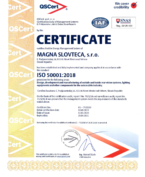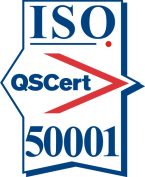Owners and managers of all types and sizes of organizations reflect on reducing the costs of their activities. A significant proportion of the costs is the cost of energy (consumption of heat, electricity, fuel).
The energy management system (EgMS) is an effective tool for all types of organizations to effectively manage and change the situation of energy consumption. By implementing this system, energy management becomes an integral part of organizational structures.
Economic advantages:
- energy effectiveness improvement
- reducing the energy intensity of processes
- increase competitiveness
Advantages for management of the organisation:
- tool for obtaining data needed for planning and establishing goals
- increase of organization ethics in relation to energy consumption
In the international dimension, a key standard for the introduction of EgMS and its certification is ISO 50001 Energy management systems. Requirements with guidance for use.
Standard is a powerful tool for effective management of energy consumption, including the key requirements that an organization must meet to obtain a certificate from the certification authority. The certified organization is eligible for the use of certification mark.

 We cover credibility!
We cover credibility! Head Quarters Site
Head Quarters Site



































